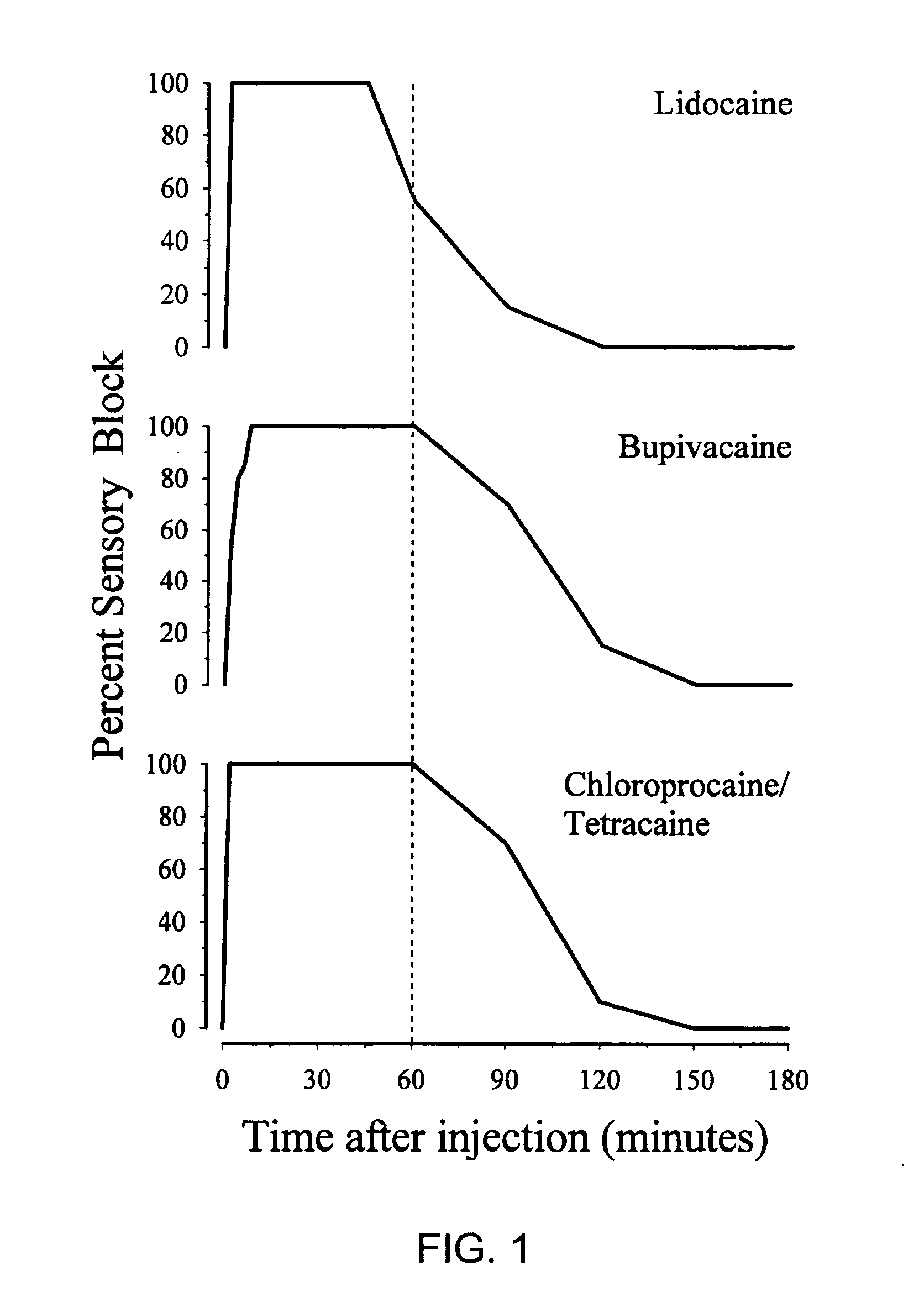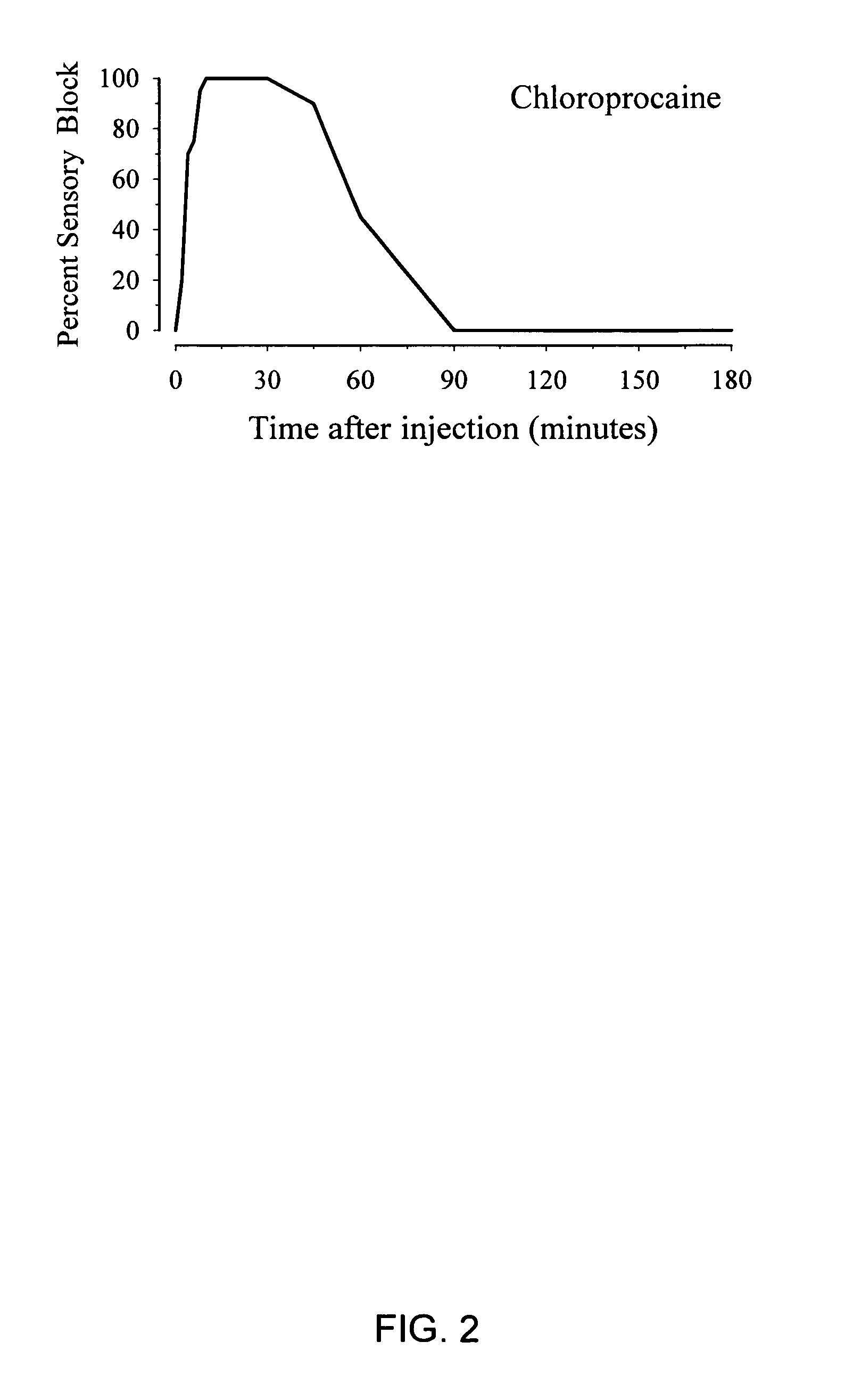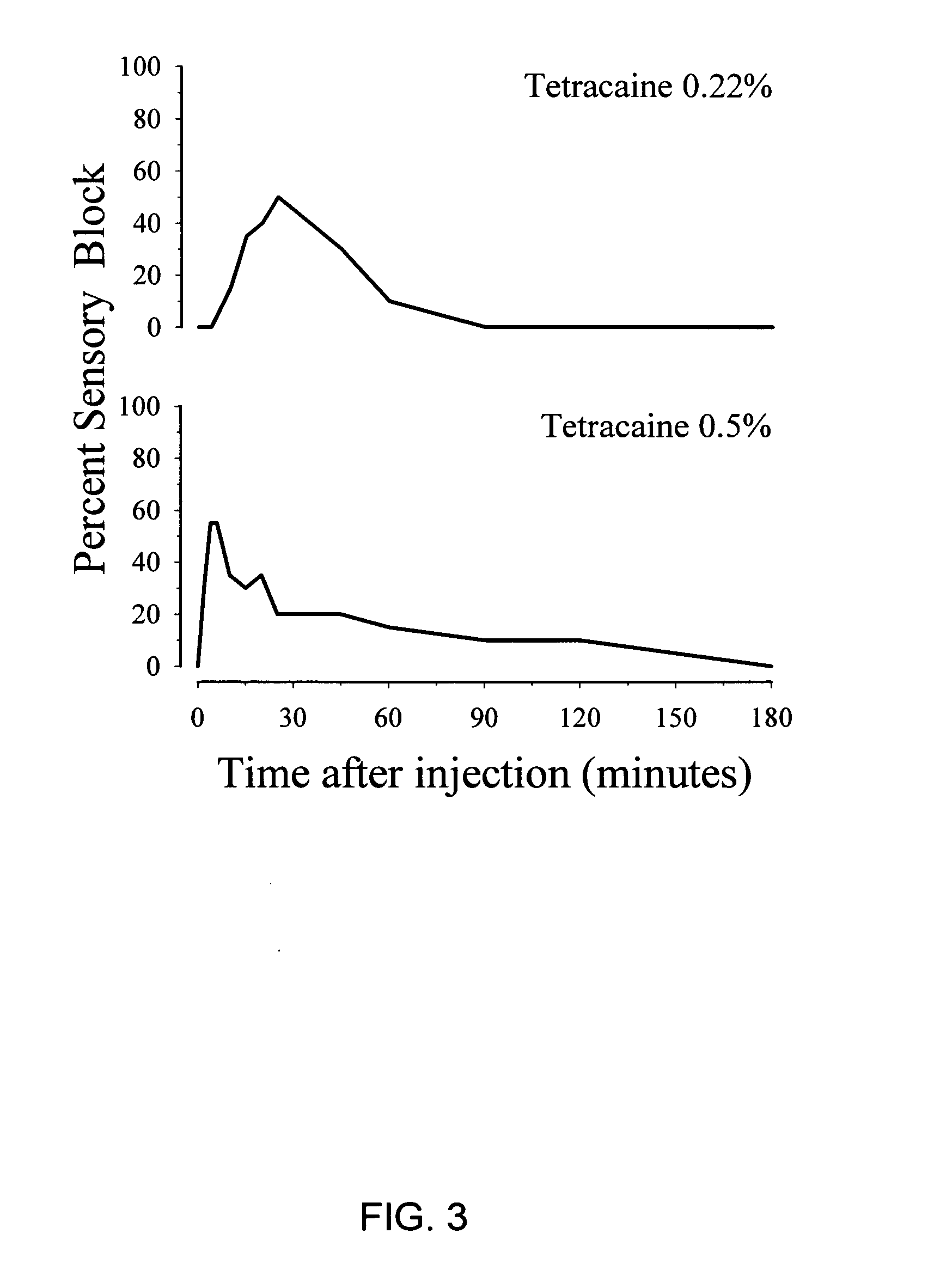Ester combination local anesthetic
- Summary
- Abstract
- Description
- Claims
- Application Information
AI Technical Summary
Benefits of technology
Problems solved by technology
Method used
Image
Examples
example 1
Formulations
[0086]
Solution for Injection AIngredientQuantitySodium Chloride0.9% (0.9 g / 100 mL)Epinephrine 1 μg / mlNaBicarbonateAs necessary to prevent acid catalyzed esterhydrolysis in vitro; not to exceed quantitiescapable of inducing precipitation of the freebase form of the local anesthetic.2-chloroprocaine10 mg / mlTetracaine 1 mg / mlWater for injectionto 100 ml
[0087]
Solution for Injection BIngredientQuantitySodium Chloride0.9% (0.9 g / 100 mL)Epinephrine 2 μg / mlNaBicarbonateAs necessary to prevent acid catalyzed esterhydrolysis in vitro: not to exceed quantitiescapable of inducing precipitation of the freebase form of the ocal anesthetic.2-chloroprocaine30 mg / mlTetracaine 3 mg / mlWater for injectionto 100 ml
[0088]
Solution for Injection CIngredientQuantitySodium Chloride0.9% (0.9 g / 100 mL)Epinephrine 5 μg / mlNaBicarbonateAs necessary to prevent acid catalyzed esterhydrolysis in vitro; not to exceed quantitiescapable of inducing precipitation of the freebase form of the local anesthetic...
example 2
Comparison of Local Anesthetics Administered Individually or in Combination
[0093] The onset and offset of sciatic nerve block from lidocaine, bupivacaine, tetracaine, and 2-chloroprocaine were examined in studies conducted in rats. Three different modalities were tested: (1) pain (e.g., withdrawal to pinch); (2) proprioception (e.g., the ability to place the paw squarely on the table); and (3) motor strength (e.g., the downward pressure the paw can exert on a scale). In each case, the same volume of local anesthetic agent was tested. The modality of interest was withdrawal to pinch. Each local anesthetic was tested on 5 rats of nearly identical size and age. The results are shown in FIG. 1.
[0094] The upper panel in FIG. 1 shows the time course of sciatic nerve block with 2.0% lidocaine, the strongest concentration of lidocaine commercially available. At this concentration, lidocaine produced a nearly immediate onset of block (i.e., 100% at the first time point tested, occurring 2 ...
example 3
Demonstration of Synergy of Local Anesthetics Administered in Combination
[0097]FIG. 2 shows the onset and duration of a rat sciatic nerve block after administration of 2% 2-chloroprocaine. The duration of the block was substantially shorter without co-administration of tetracaine, with full sensory blockade lasting only about 30 minutes. In addition, the onset of the block with 2-chloroprocaine administration was slower than with co-administration of tetracaine, suggesting that tetracaine acts synergistically to enhance the onset of 2-chloroprocaine anesthesia.
[0098]FIG. 3 shows the onset and duration of a sciatic nerve block after administration of either 0.22% tetracaine (upper panel) or 0.5% tetracaine (lower panel). Strikingly, both concentrations of tetracaine failed to produce an adequate sensory block (e.g., less than 60% sensory block). By contrast, complete sensory block was achieved when tetracaine, at a lower concentration, was co-administered with 2-chloroprocaine (see...
PUM
| Property | Measurement | Unit |
|---|---|---|
| Fraction | aaaaa | aaaaa |
| Fraction | aaaaa | aaaaa |
| Fraction | aaaaa | aaaaa |
Abstract
Description
Claims
Application Information
 Login to View More
Login to View More - R&D
- Intellectual Property
- Life Sciences
- Materials
- Tech Scout
- Unparalleled Data Quality
- Higher Quality Content
- 60% Fewer Hallucinations
Browse by: Latest US Patents, China's latest patents, Technical Efficacy Thesaurus, Application Domain, Technology Topic, Popular Technical Reports.
© 2025 PatSnap. All rights reserved.Legal|Privacy policy|Modern Slavery Act Transparency Statement|Sitemap|About US| Contact US: help@patsnap.com



